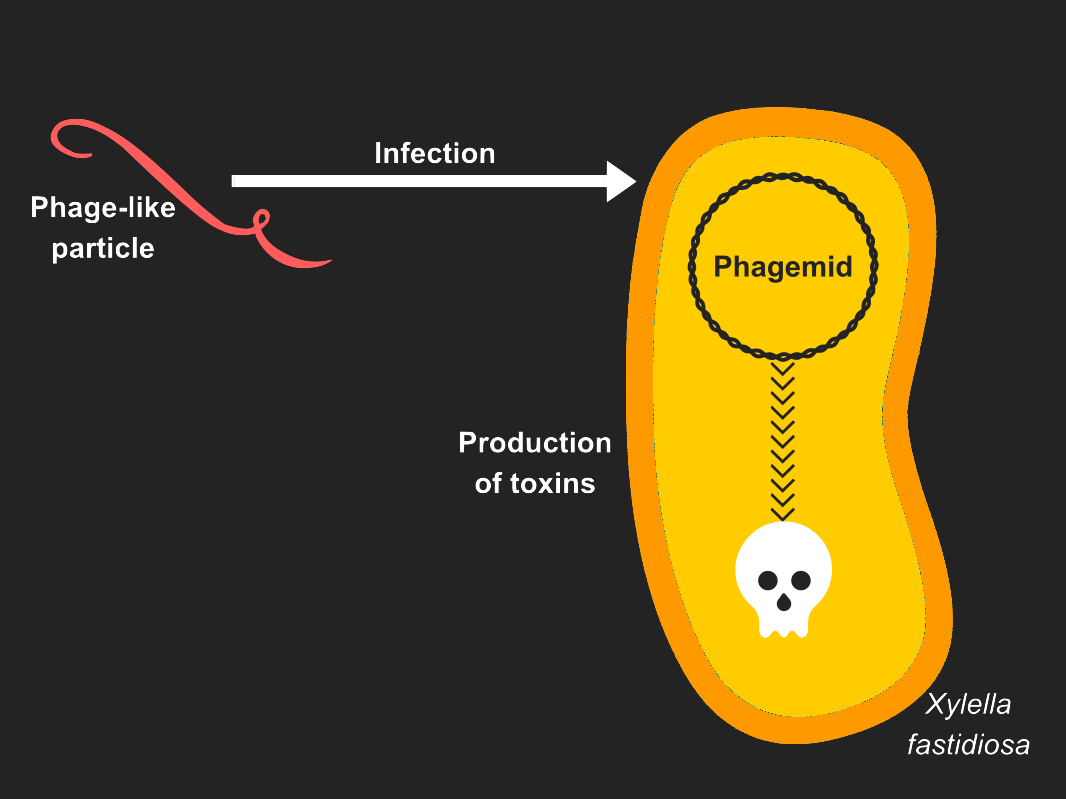Engineering bacteriophages
Bacteriophages play a special role in the development of nanoscale cargo-delivery because they can be regarded as naturally occurring nanomaterials.
We chose to explore Phage-like particles (PLPs)[1] for use against pathogenic bacteria like Xylella fastidiosa.
Our goal is to use a phage-like M13 to inject a lethal toxin into the bacterium.
To help our research we asked Mireille Ansaldi, a local phage expert.
Phage systems, like M13, have been widely employed in biotechnology, most prominently in the identification and selection of high affinity molecules through phage display [2]. The use of phages in materials science and nanotechnology is mainly due to their nanoscale size and simple life cycles. We decided to profit from this wide application in order to target X. fastidiosa [3].
Phage-like particle design
Bacteriophages are able to generate new copies of themselves using the information in their genome [4]. In our design, we decided to limit the phage's ability to reproduce in order to contain it, as our interview with Jacques VAN HELDEN indicated this was an important point. There are already well-tried methods to reduce the reproductive capacity of phages as well as to make phages with foreign proteins[1].
Phage-like particles (PLPs) mimic the organization of native phages but lack the viral genome. They have been used as vehicles for drug and gene delivery and also as tools in nanobiotechnology [5]. In this project, we create M13 phage-like particles that inject toxin genes into target bacteria.
Phage-like particle in the environment
Beyond efficiency, we want our product to be environmentally friendly so that it doesn't contaminate nature with GMO's. To investigate environmental impact, we used soil samples to test the longevity of our phages in nature. We are also working with the LGBP lab, where we test our phage in the model organism Arabidopsis thaliana.
References
- ↑ 1.0 1.1 Roldão, A., Silva, A. C., Mellado, M. C. M., Alves, P. M. & Carrondo, M. J. T. Viruses and Virus-Like Particles in Biotechnology: Fundamentals and Applications. in Reference Module in Life Sciences (Elsevier, 2017).
- ↑ Salmond, G. P. C. & Fineran, P. C. A century of the phage: past, present and future. Nat Rev Micro 13, 777–786 (2015).
- ↑ Buttimer, C. et al. Bacteriophages and Bacterial Plant Diseases. Front. Microbiol. 8, (2017).
- ↑ Salmond, G. P. C. & Fineran, P. C. A century of the phage: past, present and future. Nat Rev Micro 13, 777–786 (2015).
- ↑ Czapar, A. E. & Steinmetz, N. F. Plant viruses and bacteriophages for drug delivery in medicine and biotechnology. Current Opinion in Chemical Biology 38, 108–116 (2017).




